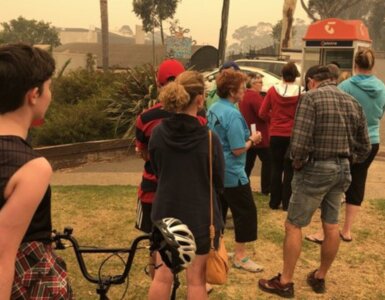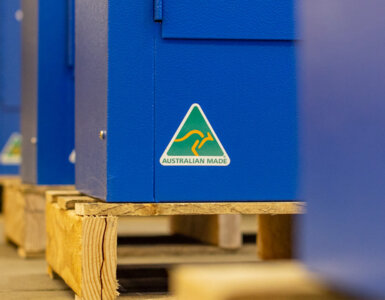Marred by the ongoing drought and devastating bush fires and flood, 2019 has been a roller coaster ride for farmers and Australian agriculture. Australians Farmers looks at the highs and lows of the year that was through the lens of the National Farmers’ Federation.
1. Actions of radical group stemmed
In January a radical anti-farm group published online, the address details of more than 3000 farms and supply chain businesses for the alleged purposes of inciting trespass, theft and damage.
The NFF was successful in calling on the Federal Government to take action to protect farmers, including prompting amendments to the Criminal Code and the Privacy Act. The #ProtectOurFarms petition hosted by Australians Farmers attracted more than 20,000 signatures.
In November, pressure from NFF and our members saw the group stripped of its charity status. Many states also moved to tighten trespass laws. A so-called national day of action by the group on 8 April drew the ire of the Australian public and failed to have its intended impact.
2. Federal Election 2019 – Growing Australian Agriculture
The NFF’s Growing Australian Agriculture campaign and Election Commitment Tracker, kept agriculture front and centre of the 2019 Federal election. The NFF hosted candidate debates in Rockhampton, Bendigo and Canberra. The CEO & President met with the new agriculture Minister, Senator Bridget McKenzie on her first full day in office.
3. Farm safety wins protect agriculture’s most valuable asset
In September, the NFF led a demonstration on the lawns of Parliament House to implore the Government to act on quad bike safety. Following sustained pressure by the NFF and other leading voices for regional Australia and the medical fraternity, the Federal Government adopted the ACCC’s recommendations to develop a new quad bike safety rating and mandate the fitting of operator protection devices to all new quad bikes within two years.

This month, Agriculture Minister, Senator Bridget McKenzie confirmed $1.9 million for Farmsafe Australia, a not-for-profit organisation dedicated to making farms safer places to work and live. The NFF is the secretariat of Farmsafe.
🗺️ 2030 Roadmap goal: 1) Zero farm fatalities by 2030 and 2) Close the gap between the psychological wellbeing of farmers and the broader community.
4. Valuing farmers’ natural capital
During March, the Federal Government heeded a call by the NFF for a new approach to the intersection between agriculture and the environment, by committing $30 million to a Biodiversity Stewardship Pilot Program and $4 million to a Sustainability Certification. The NFF is pleased to be working with the Government on both projects.
During the last sitting week of the year, the NFF and KPMG launched ‘A Return on Nature’, a report outlining a framework for unlocking farmers’ natural capital.
🗺️ 2030 Roadmap goal: The net benefit for ecosystem services is equal to 5% of farm revenue.
5. Staying the course with the Murray Darling Basin Plan
Through the Water Taskforce, the NFF and its members met regularly throughout 2019 to assess the status of national water management. The NFF continues to call for Basin Governments to get on with implementing processes that will enhance the Plan, not in the least adopting the recommendations of the Productivity Commission’s five-year review. In December, the NFF, NSW Farmers and Victorian Farmers Federation met with frustrated southern irrigators on the sidelines of a rally in Canberra. Both parties agreed to work together for the benefit of agriculture, communities and the environment.
6. A new approach to drought
During October, NFF members endorsed a whole new approach to the how our nation prepares for, manages through and recovers from drought. The NFF’s National Drought Policy was discussed with the Prime Minister, Deputy Prime Minister and Drought Minister and at a meeting of Commonwealth and State Agriculture Ministers.
In December, the Agriculture Ministerial Council agreed to form an enduring Drought Working Group to assess drought support measures.

In January the NFF ‘turned on’ FarmHub, a comprehensive one-stop-shop for details on government and charitable drought support measures. The NFF was commissioned by the Federal Government to develop FarmHub.

7. Celebrating the past, looking to the future
During 2019, NFF marked 40 years. To celebrate, the NFF hosted a gala dinner in the Great Hall of Parliament House, Canberra with special guests including The Hon Prime Minister, Scott Morrison, MP. More than 550 Members of Parliament, Senators, past presidents, farmers, industry leaders and staff past and present joined in the celebrations.


With an eye on the future, also on 14 October, the NFF Leaders’ Summit, reported on the progress towards NFF’s vision for agriculture to be $100 billion industry by 2030. One year on from the launch of the 2030 Roadmap, 250 of our industry’s brightest joined in a successful day of discussion.
8. Telling Our Story to bridge the urban city divide
During July, the NFF officially launched the Telling Our Story initiative designed to better connect consumers with food and fibre production and to secure agriculture’s social licence to operate. The NFF is supported by founding partners Meat and Livestock Australia and Nutrien Ag Solutions (formerly Landmark). A committee of esteemed Australians was established to direct the project. Advisory Committee members include NFF president Fiona Simson, Richard Goyder, Alison Watkins, Matt Moran, Robbie Sefton, Geoff Maynard (representing MLA) and Rob Clayton (representing Nutrien).
Research commissioned by NFF found 63% of Australians feel disconnected with rural Australia and agriculture. Seventy-four per cent of those surveyed identified as conscious consumers.
To signal the beginning of the initiative, NFF developed a short film We Are Australian Farmers. The production highlights the shared values of all Australians regardless of where they live and what they do.
Country and city dwellers alike came out to support National Agriculture Day on Thursday 21 November. The NFF led celebrations with morning commuters at Darling Harbour and Federation Square and other events, big and small, were held across the country.
- The hashtag #AgDayAU was trending on Twitter for most of the day, including the #1 spot for much of the morning.
- Across Twitter, Facebook and Instagram there were at least 2,500 posts using the hashtags #AgDayAU and #WeAreAusFarmers
- These posts were liked than 40,000 times and seen 10.3 million times by 4.5 million people.
🗺️ 2030 Roadmap goal: Agriculture is ranked Australia’s most trusted industry by 2030.

9. Nurturing agriculture’s future leaders
Ten outstanding women were selected for NFF’s second annual Diversity in Agriculture Leadership Program. Following a two-day retreat in Canberra, the women took part in a five-month intensive mentoring program to assist them to realise their leadership aspirations.

NFF President Fiona Simson
As part of the program, the NFF was joined by more than 20 of agriculture’s leading business and Government agencies, in a pledge to make meaningful change towards increased gender diversity within their leadership ranks.

In its second year, the NFF 2030 Leaders Program brought together 10 men and women from across the country to hone their leadership skills and to work on a special project. Supported by Telstra and the Department of Agriculture, the group took part in a week long retreat near Canberra.
🗺️ 2030 Roadmap goal: Achieve gender parity in the agricultural workforce and double the number of women in management roles.
10. Making ground on communications
Feedback from the Regional, Rural and Remote Communications Coalition was the catalyst for the new Sky Muster Plus product. Launched in August, Sky Muster Plus exempts essential internet uses such as browsing, banking, email and software updates from monthly data allowances.

During September, delegates of the RRRCC hosted two-days of meetings with Federal MPs and Senators, to highlight the opportunities that connectivity presents for regional Australia and the ongoing limitations that regional consumers face.
🗺️ 2030 Roadmap goal: Every Australian farm has access to infrastructure and skills to connect to the Internet of Things.







































Add comment